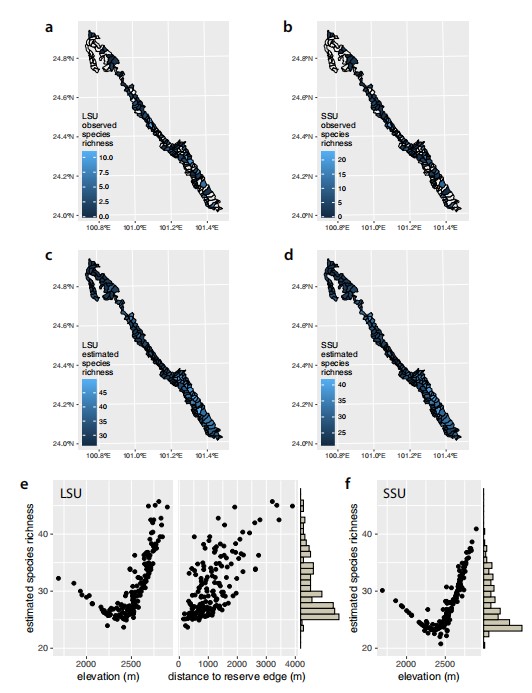A research team led by Prof. Douglas YU from Kunming Institute of Zoology, the Chinese Academy of Sciences revealed a new method to measure animal biodiversity on large scales. The paper entitled “Measuring Protected-Area Effectiveness using Vertebrate Distributions from Leech iDNA” (web link: https://doi.org/10.1038/s41467-022-28778-8) was published in Nature Communications .
Protected areas are central to meeting biodiversity conservation goals but measuring their effectiveness is challenging. Researchers therefore addressed this challenge by using DNA from leech-ingested bloodmeals to estimate vertebrate occupancies across the 677 km2 Ailaoshan reserve in Yunnan, China. With the great help from Yunnan Forestry Survey and Planning Institute, 163 park rangers collected 30,468 leeches from 172 patrol areas. Researchers identified 86 vertebrate species, including amphibians, mammals, birds, and squamates.
Multi-species occupancy modelling showed that species richness increased with elevation and distance to reserve edge, including the distributions of most of the large mammals (e.g., sambar, black bear, serow, tufted deer). The exceptions were the three domestic mammal species (cows, sheep, goats) and Muntjak deer, which were more common at lower elevations. Vertebrate occupancies are a granular, large-scale conservation-outcome measure that can be used to increase management effectiveness and thus to improve the contributions that protected areas to achieving global biodiversity goals.
Vertebrate occupancies are a direct measure of conservation outcomes that can help guide protected-area management and improve the contributions that protected areas make towards global biodiversity goals. Here, the findings show the feasibility of using invertebrate-derived DNA to estimate spatially-resolved vertebrate occupancies across entire protected areas.
This study was supported by organizations from Harvard’s Global Institute, the State Key Laboratory of Genetic Resources and Evolution and Center for Excellence in Animal Evolution and Genetics, and grants from the Key Research Program of Frontier Sciences and the Strategic Priority Research Program of the Chinese Academy of Sciences and National Natural Science Foundation of China, etc.

Figure 1. Ailaoshan National Nature Reserve map, a blood-sucking leech and some of the protected animals detected in this study.

Figure 2. Species richness by patrol area.
(By WU Chunying, Editor YANG Yingrun)
Contact:
JI Yinqiu
jiyinqiu@hotmail.com
